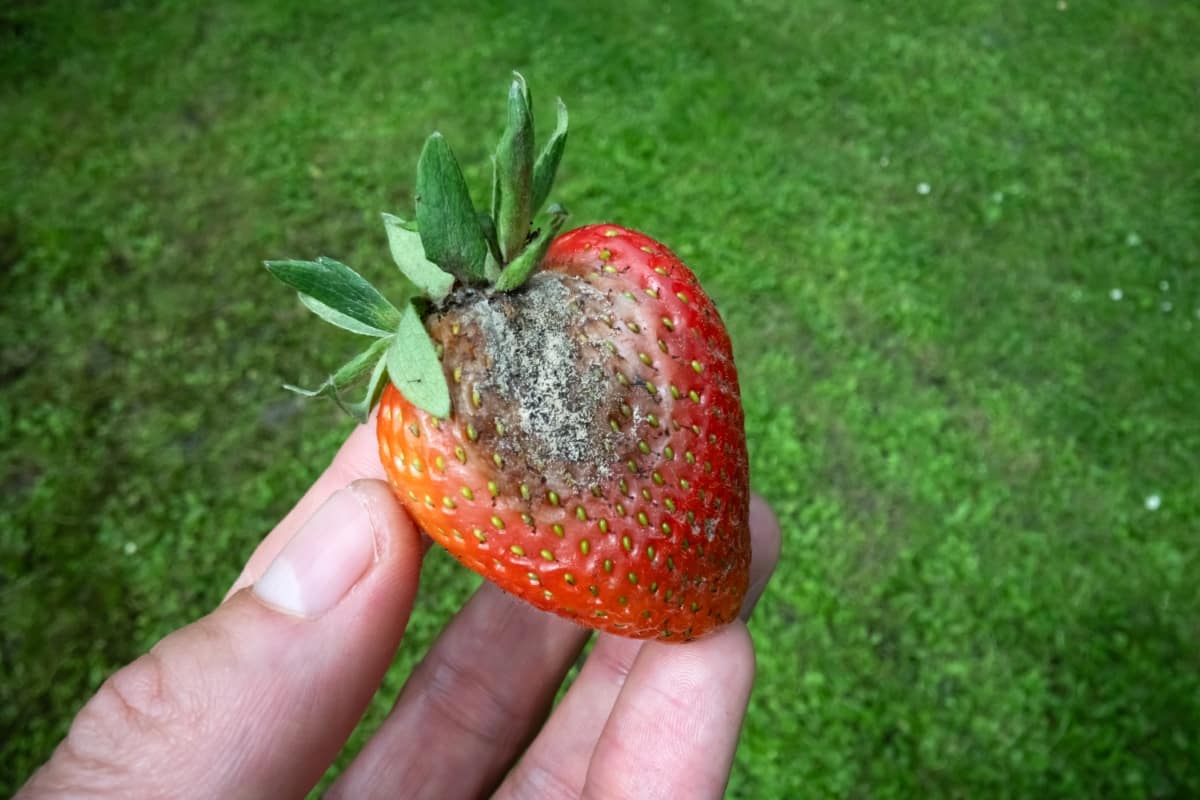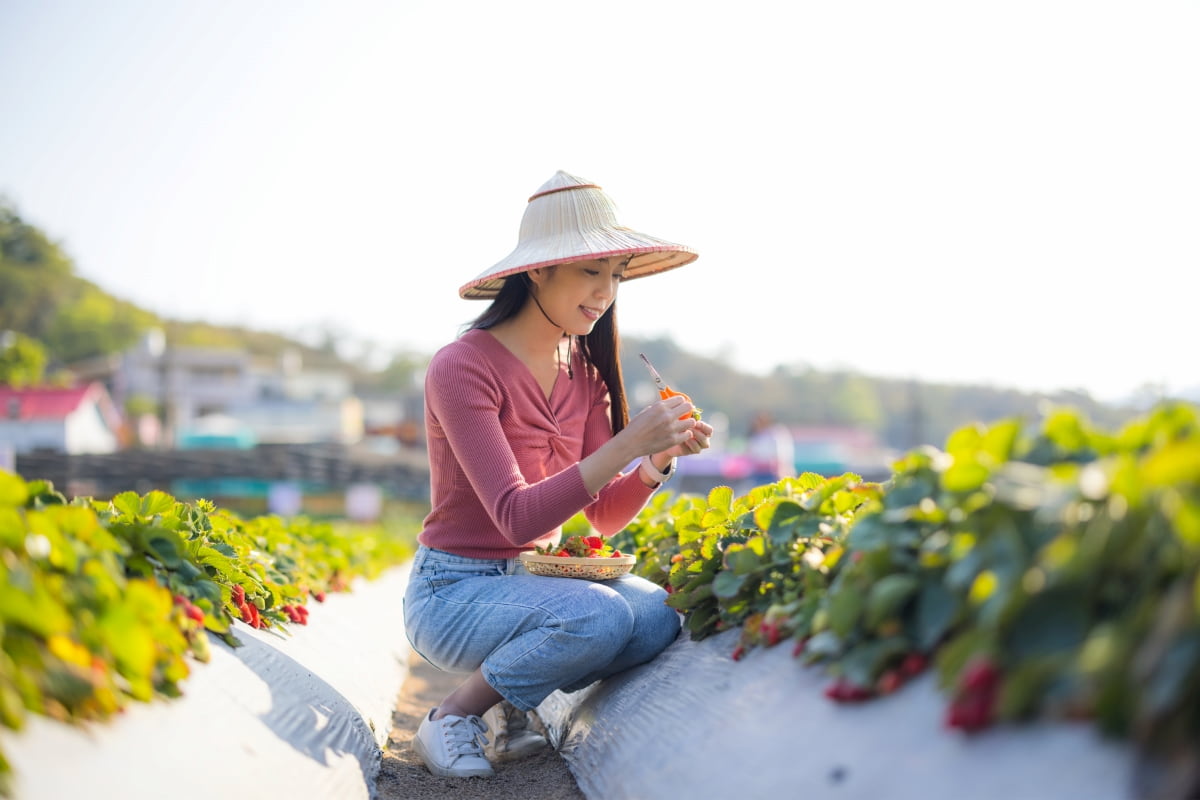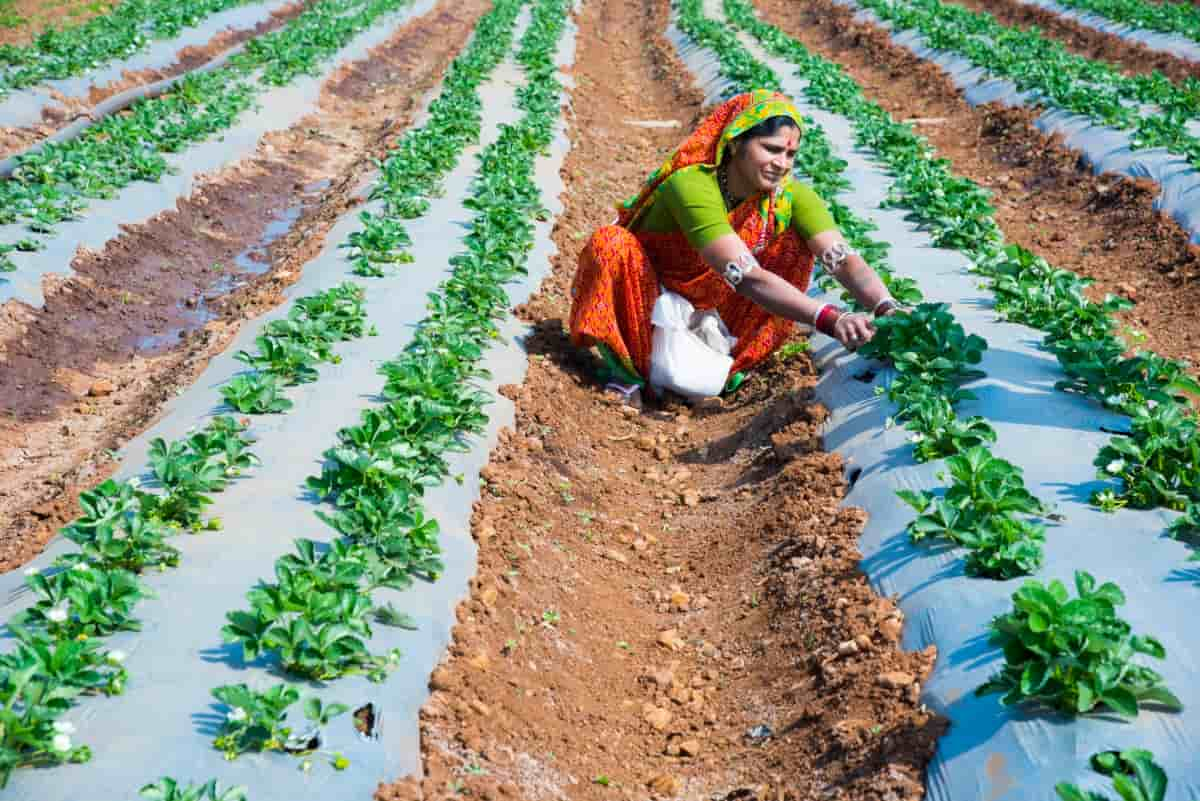Fungal diseases significantly threaten strawberry plants, impacting both yield and quality. Common culprits include Botrytis cinerea, causing gray mold, and Colletotrichum spp., leading to anthracnose. These pathogens thrive in moist conditions, spreading through spores and infecting leaves, flowers, and fruit. Early symptoms include browning, wilting, and decay.

Effective management involves preventive measures like proper spacing, ventilation, and fungicide applications. Timely identification and removal of infected plant parts are crucial to curb the spread. By implementing these strategies, growers can mitigate the risk of fungal diseases and ensure the health and productivity of their strawberry crops.
Management of Fungal Diseases in Strawberry
Common Fungal Pathogens Affecting Strawberry Plants
Strawberry plants are susceptible to various fungal pathogens that can detrimentally impact their growth. Botrytis cinerea, causing gray mold, thrives in cool and humid conditions, leading to fruit decay. Colletotrichum spp. Induces anthracnose, resulting in dark lesions on berries and potential yield loss. Fusarium oxysporum targets the vascular system, causing wilt. Rhizoctonia spp.
Contributes to root rot, compromising plant health. Powdery mildew, caused by Podosphaera spp., manifests as a white powdery substance on leaves, hindering photosynthesis. Vigilant disease management through cultural practices and fungicides is crucial for sustaining healthy strawberry crops and optimizing yield.
How to Identify Symptoms of Fungal Diseases in Strawberry Plants
Identifying fungal diseases in strawberry plants hinges on keen symptom observation. Gray mold, caused by Botrytis cinerea, presents as fuzzy, brownish-gray mold on berries, often spreading from flowers. Anthracnose, induced by Colletotrichum spp., is recognized by dark lesions on fruit surfaces, progressing to sunken, rotting areas.
Fusarium wilt exhibits wilting and yellowing of leaves due to Fusarium oxysporum attacking the vascular system. Root rot caused by Rhizoctonia spp. Shows stunted growth and decayed roots. Powdery mildew, by Podosphaera spp., displays white, powdery spots on leaves. Regular plant inspections, prompt removal of infected parts, and proper fungicide application aid in early detection and effective management.
Early Detection and Diagnosis in Managing Fungal Diseases
Early detection and diagnosis are paramount in effectively managing fungal diseases in strawberry plants. Swift identification allows for the timely implementation of control measures, curbing the spread before significant damage occurs. Early intervention minimizes yield loss, preserves fruit quality, and reduces the need for aggressive chemical treatments. Additionally, it prevents the establishment of resilient fungal populations.
In case you missed it: How to Prevent Strawberry Fruit Rot Naturally: How Control with Natural and Organic Treatment

Regular monitoring for symptoms such as discoloration, wilting, or lesions enables growers to enact preventive strategies like sanitation, proper spacing, and targeted fungicide application. Proactive management, facilitated by early detection, is crucial for sustaining healthy strawberry crops and ensuring a robust harvest.
Best Cultural Practices for Preventing Fungal Diseases in Strawberry Plants
Optimal cultural practices are essential for preventing fungal diseases in strawberry plants. Adequate spacing between plants enhances air circulation, reducing humidity that fosters fungal growth. Planting in well-drained soil minimizes excess moisture, a common factor in disease development. Regularly removing and disposing of plant debris prevents fungal spore buildup.
Mulching with clean straw helps maintain soil moisture balance. Irrigating at ground level, preferably in the morning, reduces foliage wetness. Applying fungicides preventively, especially during critical growth stages, fortifies disease resistance. These combined practices create an unfavorable environment for fungal pathogens, promoting overall plant health and resilience in strawberry crops.
Best Natural and Organic Treatments for Controlling Fungal Diseases in Strawberry Plants
Natural and organic treatments offer effective alternatives for controlling fungal diseases in strawberry plants. Neem oil, with its antifungal properties, acts as a preventative spray. Like the Bordeaux mixture, copper-based fungicides provide organic protection against various pathogens. Beneficial microbes, such as Bacillus subtilis, can be applied to enhance the plant’s natural defenses.
Additionally, compost tea serves as a nutrient-rich, disease-suppressive soil amendment. Regular applications of sulfur, a natural fungicide, help manage powdery mildew. Adopting these sustainable solutions not only combats fungal diseases but also aligns with organic farming principles, promoting ecological balance and healthier strawberry crops.
Beneficial Microorganisms for Biological Control of Fungal Pathogens in Strawberries
Utilizing beneficial microorganisms for biological control in strawberry crops enhances resistance against fungal pathogens. Bacillus subtilis, a naturally occurring bacterium, produces antifungal compounds, inhibiting pathogen growth. Trichoderma species act as mycoparasites, attacking and suppressing fungal infections. Mycorrhizal fungi establish symbiotic relationships with plant roots, enhancing nutrient uptake and bolstering plant defenses.
In case you missed it: How to Control Hydroponic Strawberry Pests and Diseases Naturally: A Sustainable Approach

These biocontrol agents compete with and outcompete harmful fungi, reducing disease incidence. By harnessing the power of these beneficial microorganisms, farmers can foster a more resilient and ecologically sustainable strawberry cultivation, minimizing the reliance on synthetic chemicals and promoting long-term plant health.
Enhancing Soil Health to Suppress Fungal Diseases in Strawberry Plants
Improving soil health is integral to suppressing fungal diseases in strawberry plants. Implementing organic matter, like compost, enriches soil structure and promotes beneficial microbial activity. Crop rotation disrupts disease cycles, preventing the buildup of specific pathogens. Avoiding waterlogged conditions by ensuring proper drainage reduces fungal proliferation.
Cover cropping enhances biodiversity and fosters a balanced soil microbiome, contributing to disease suppression. Employing mycorrhizal fungi as soil inoculants establishes symbiotic relationships, fortifying plant defenses. Balanced nutrient management supports overall plant vigor, reducing susceptibility to infections.
Best Irrigation and Drainage Techniques to Reduce Fungal Disease in Strawberry Garden
Optimal irrigation and drainage are crucial in mitigating fungal diseases in a strawberry garden. Drip irrigation systems or soaker hoses directly deliver water to the soil, minimizing leaf wetness and discouraging fungal growth. Implementing a well-designed drainage system prevents waterlogging, a common factor in disease development. Mulching with straw or organic materials helps regulate soil moisture. Avoiding overhead irrigation reduces water splashing on foliage, limiting the spread of pathogens. Monitoring and adjusting watering practices based on weather conditions promotes a drier environment.
IPM Strategies for Effective Fungal Disease Management in Strawberries
Integrated Pest Management (IPM) strategies are vital for effective fungal disease management in strawberry crops. Begin with disease-resistant cultivars and proper spacing to enhance air circulation. Regularly monitor plants for early symptom detection, implementing biological controls like beneficial microbes (e.g., Bacillus subtilis) and mycorrhizal fungi. Utilize natural predators, such as predatory mites, to control harmful pests that may exacerbate fungal issues.
In case you missed it: How to Control Strawberry Pests Naturally: How to Get Rid of Them with Natural and Organic Treatment

Adopt cultural practices like crop rotation, cover cropping, and balanced nutrient management to foster a resilient and disease-suppressive soil environment. Implementing drip irrigation and mulching reduces leaf wetness, limiting favorable conditions for fungal growth. When necessary, apply organic fungicides like neem oil or copper-based solutions judiciously.
Conclusion
In conclusion, the effective management of fungal diseases in strawberry plants involves a holistic approach. Growers can control and prevent fungal infections by integrating natural and organic treatments. This ensures healthier crops and aligns with environmentally friendly and sustainable farming practices, reducing reliance on synthetic chemicals for long-term success in strawberry cultivation.
- Beneficial Insects in Pest Management
- Natural Solutions for Pest Control in Flower Gardens
- Types of Fungicides Used in Agriculture
- Common Issues in the Fruit Development Stage of Pomegranate Farming
- Fruit Development Issues in Papaya: Easy Solutions and Treatment
- Soil-Borne Diseases and How to Protect Your Plants
- Practices to Prevent Disease Spread in the Garden
- From Wilted to Thriving: How to Treat Root Rot Naturally in Houseplants
- Natural Remedies to Cure Brown Spots on Fig Tree Leaves